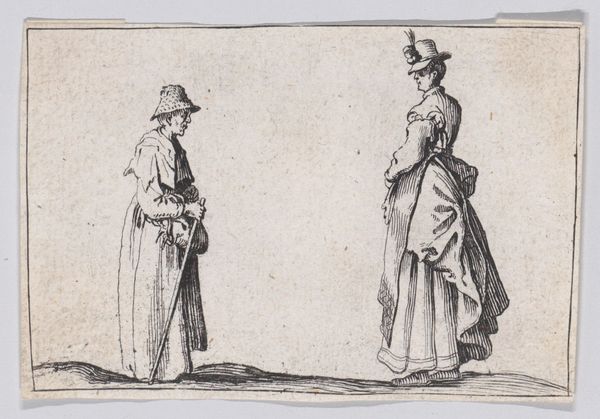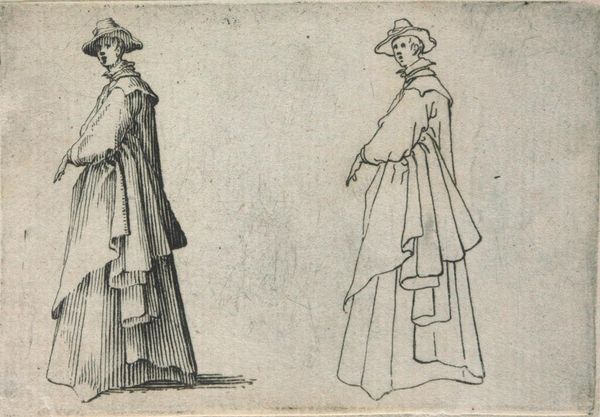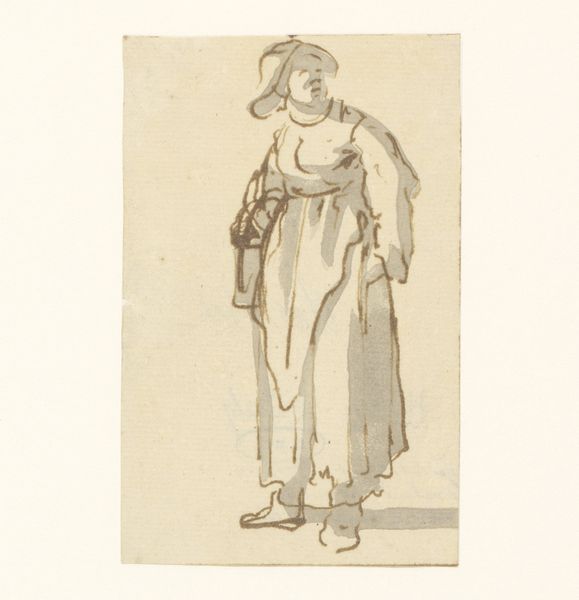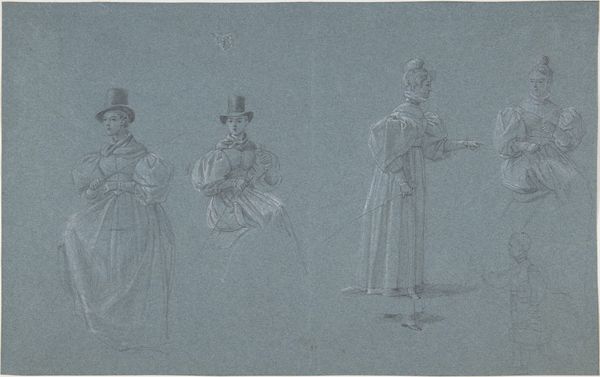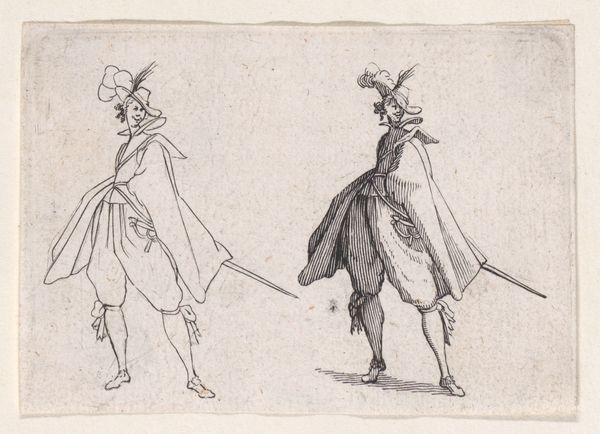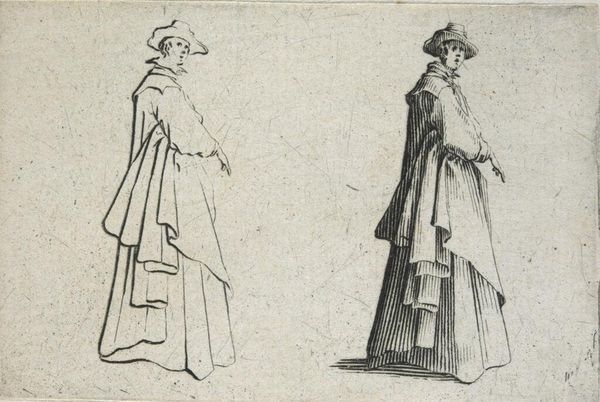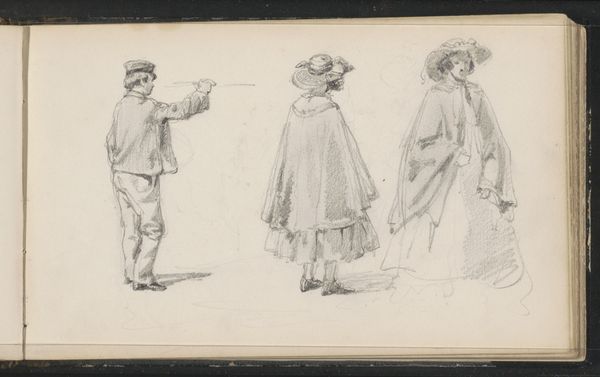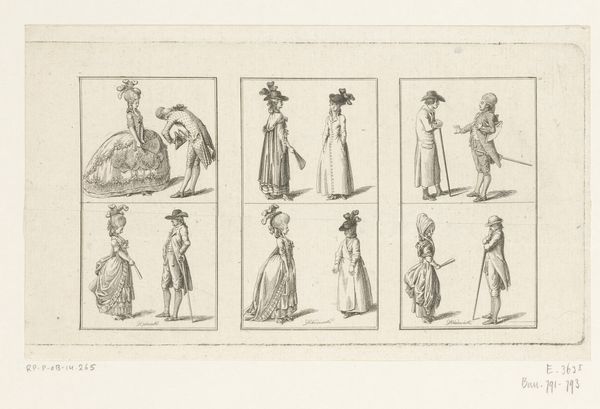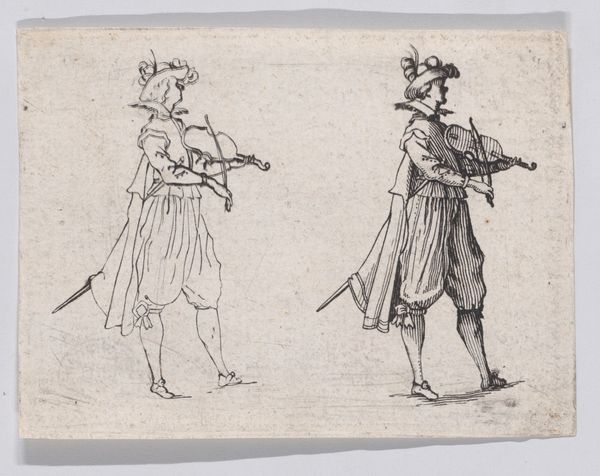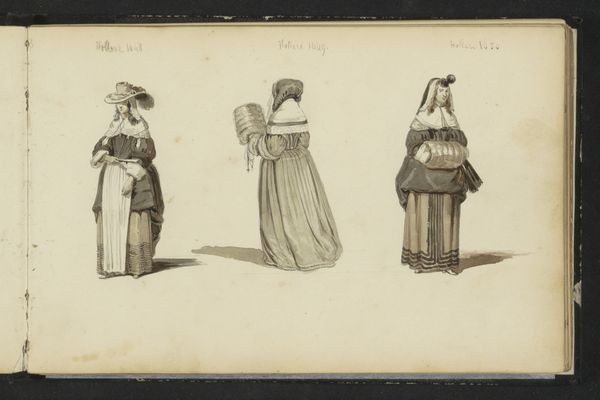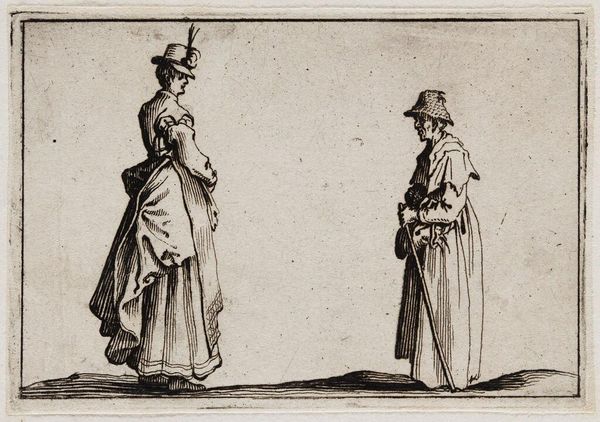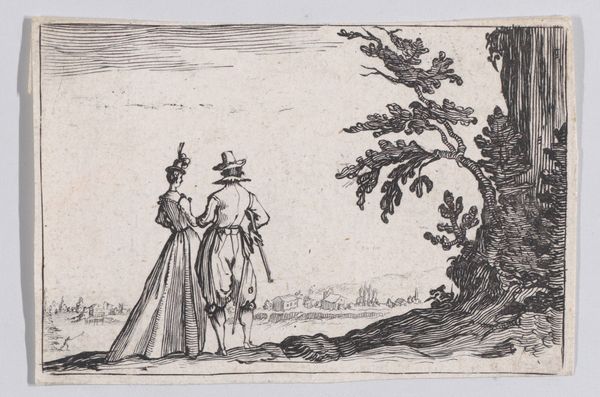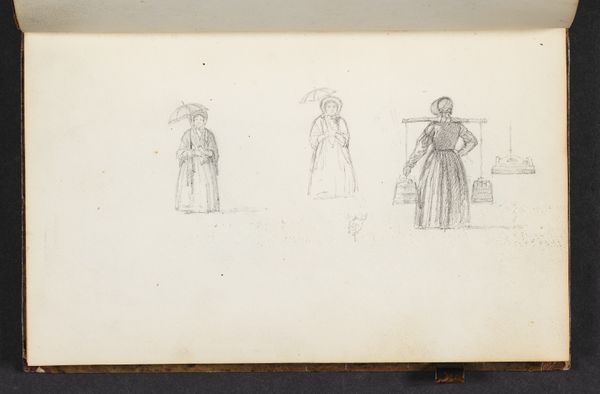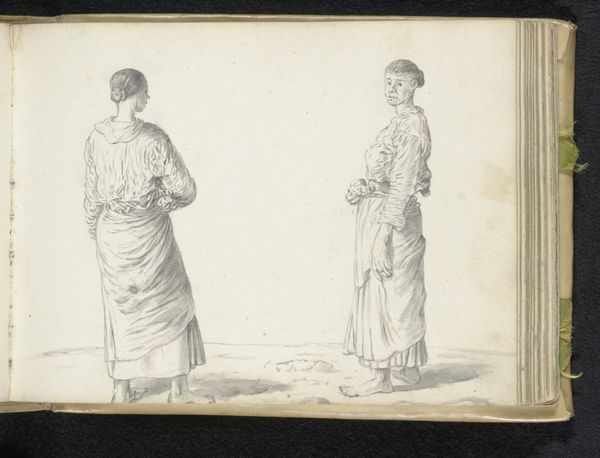
Reverse Copy of La Dame au Vêtement Ample (The Woman with the Ample Clothing), from "Les Caprices" Series A, The Florence Set 1620 - 1700
0:00
0:00
drawing, print, engraving
#
portrait
#
drawing
#
baroque
# print
#
figuration
#
historical fashion
#
sketchbook drawing
#
history-painting
#
engraving
Dimensions: Sheet: 2 1/2 x 3 1/8 in. (6.4 x 8 cm)
Copyright: Public Domain
Editor: So this print, "Reverse Copy of La Dame au Vêtement Ample," created sometime between 1620 and 1700, depicts two sketches of a woman in what I'd call baroque historical fashion. They are reminiscent of fashion plates, yet they are presented as sketches and it gives them an informal mood. What’s your read on the purpose of this piece? Curator: That’s an astute observation. The print functions, as you mentioned, a little like a fashion plate, offering visual information, yet simultaneously subverts that purpose. It's crucial to remember the sociopolitical context of printmaking during this era. Prints were a key means of disseminating imagery, but they also created accessibility and even agency. "Les Caprices," the series this is part of, often engaged with the performance of gender, particularly how women's identities were constructed and consumed by the public eye. Editor: So, in this case, how might the "ample clothing" contribute to that identity performance? Curator: Exactly. Think about what “ample” signifies – extravagance, access to materials, a certain degree of social status. The portrayal, almost like a stencil ready to be populated with variations, questions the fixity of identity and celebrates creativity. And then we need to consider the choice of printing-- were these prints catering to a specific class, promoting certain values? How accessible would this have been, and who might have wanted it, given that "high art" values had yet to permeate through much of Europe? Editor: That's really interesting, framing it in terms of both the subject's status and the print's own role in circulating ideas. It’s almost like the work becomes a statement about the means of representing women. Curator: Precisely. And questioning the existing means, perhaps suggesting alternatives that destabilize entrenched power structures. This piece offers an opportunity to contemplate what’s displayed, but also *how* and *why* it’s put on display. Editor: I'm beginning to appreciate how its historical context informs how this piece performs its historical setting. Curator: Right, considering art as a site where social norms are subtly affirmed, negotiated, and sometimes, challenged.
Comments
No comments
Be the first to comment and join the conversation on the ultimate creative platform.
